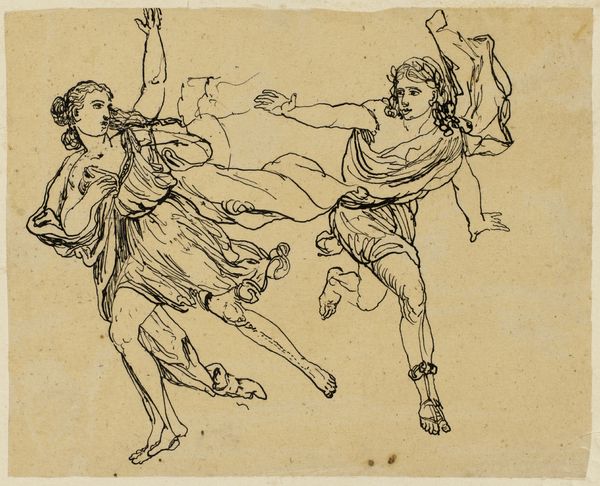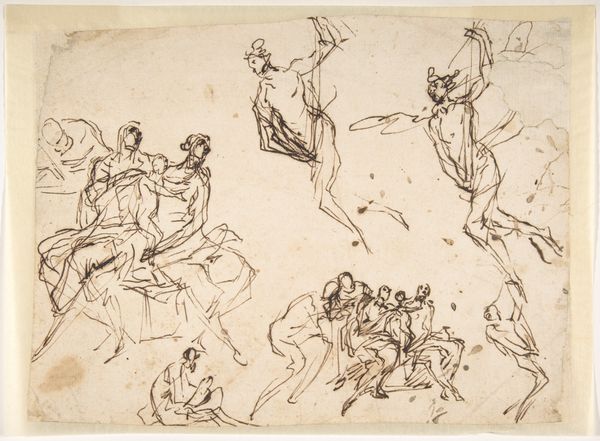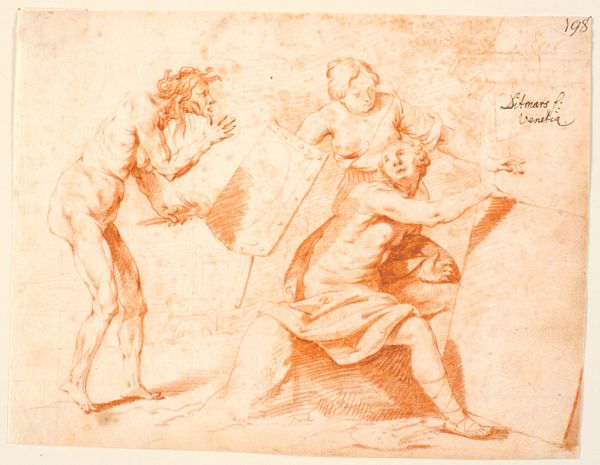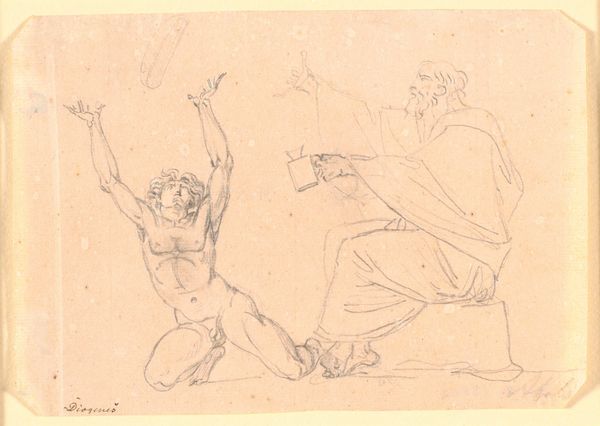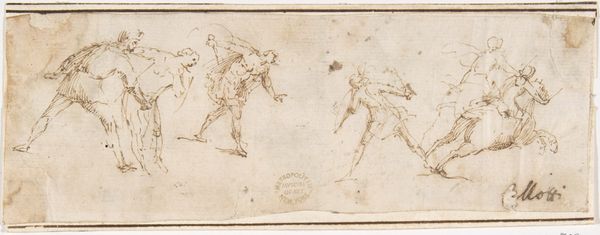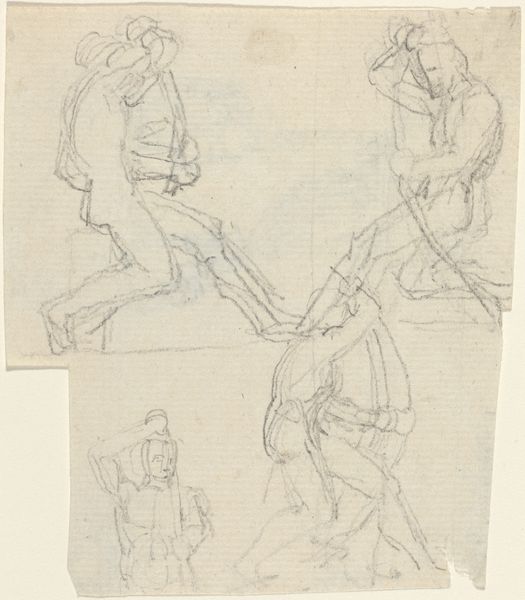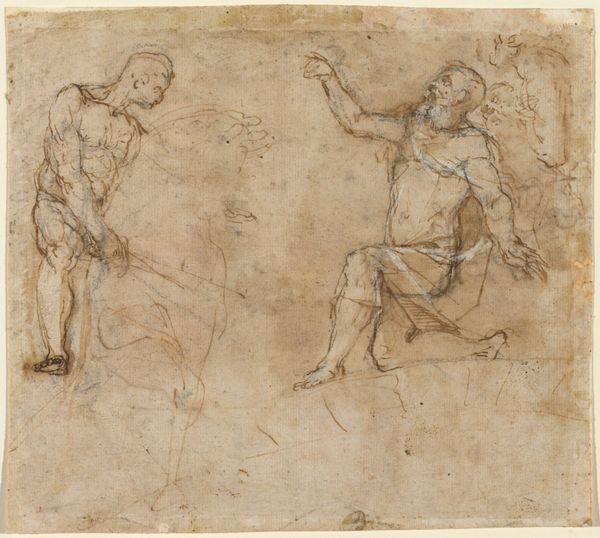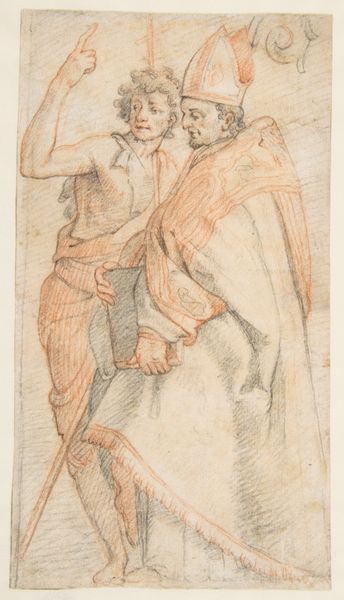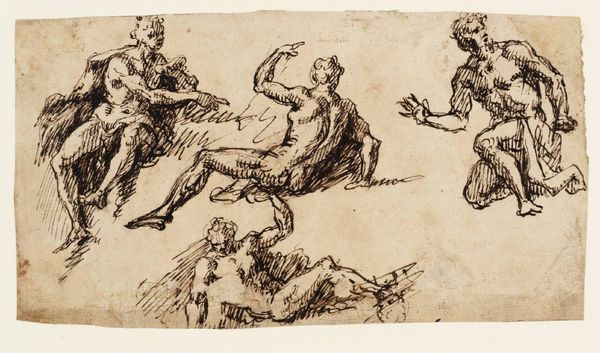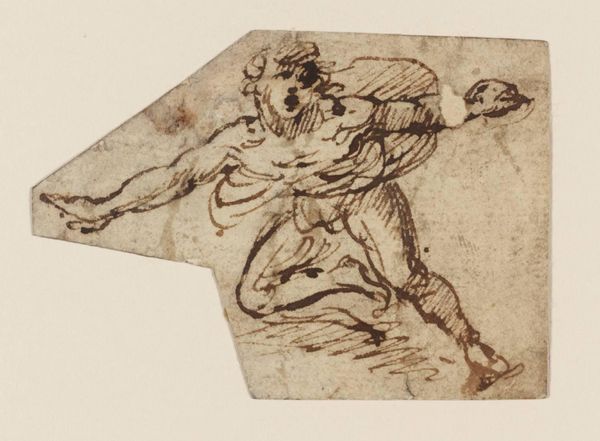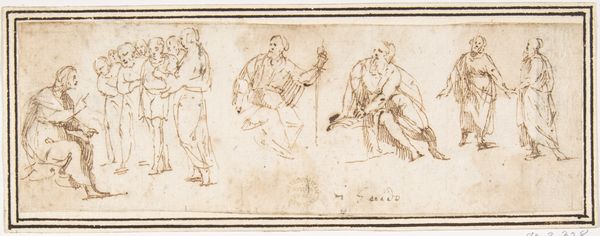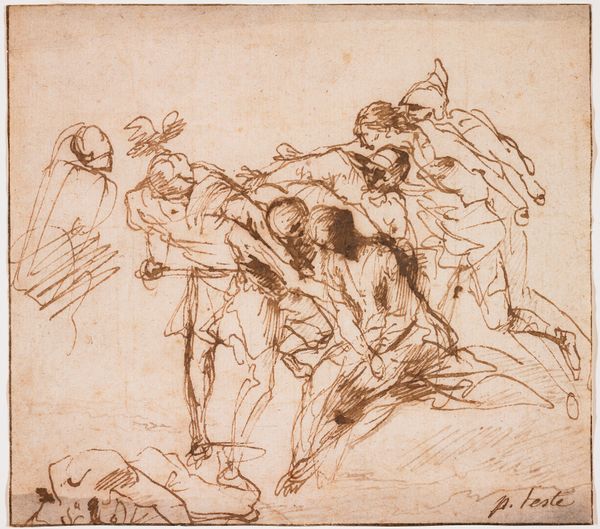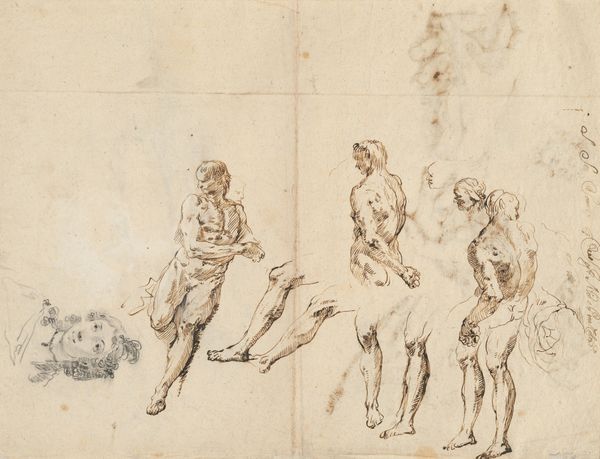
Seated Female Nude and Dancing Female Figure 1624 - 1663
0:00
0:00
drawing, paper, ink
#
drawing
#
baroque
#
figuration
#
paper
#
female-nude
#
ink
#
nude
Dimensions: 3-7/8 x 4-7/8 in. (9.8 x 12.4 cm)
Copyright: Public Domain
Curator: Here we have Francesco Allegrini's "Seated Female Nude and Dancing Female Figure," an ink drawing on paper dating from between 1624 and 1663. The rapid, fluid lines suggest a work intended for preparatory use. Editor: My immediate response is to the energy of the dancer—it contrasts so vividly with the stillness of the seated nude. The economy of line emphasizes raw movement; it's captivating! Curator: Precisely! The material aspect here is critical. Consider the paper—probably quite commonplace at the time, definitely a reusable material. And then we look at ink drawings… drawings often occupy this ambiguous space, they may become finished artwork, yet often document the artistic process, in this case for the figures, forms, poses... Editor: And isn’t that duality fascinating, particularly when looking through a feminist lens? Female nudes throughout art history have often been treated as static, passive objects, presented for the male gaze. Allegrini subverts those expectations by juxtaposing her with an active, empowered dancer, who seems almost to reject traditional restraints of her pose and role. Curator: I find it helpful, also, to look at the labor involved here. Allegrini clearly made countless sketches. Each mark, each cross-hatched area contributes. We are considering paper, pen, ink, and all, of course, but, equally, let's keep in mind the sheer skill and time—even in its speed—embodied by those gestures. Editor: Absolutely! And let’s not forget the socio-political context of Baroque art. It was frequently utilized as a tool of the church, meant to inspire religious fervor and project authority. Yet, here, Allegrini focuses on the human form, hinting at sensual earthly delight as equally valuable, shifting the emphasis to the experiences and feelings of human beings in all their complexity. Curator: Right. Seeing how this relates to the artist’s place, time, social standing allows us, hopefully, to have a clearer vision, literally to read how all of this comes together with materials to create a valuable document for a larger culture and its many audiences and consumers. Editor: The composition and narrative really get to the heart of it all; it encourages you to question, re-evaluate the stories being told and how that links with the social and economic drivers that frame human relations! Curator: Seeing the details in this context definitely makes a big impact on understanding the scope of such artwork. Editor: Indeed. I am definitely more energized seeing both figures as acting from within, not being acted upon by historical and art traditions.
Comments
No comments
Be the first to comment and join the conversation on the ultimate creative platform.
